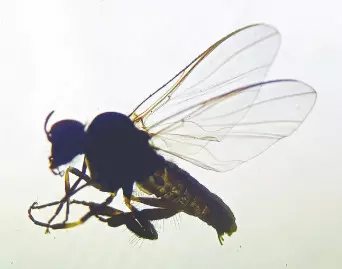ZSI study identifies blood-sucking fly in North Bengal that can cause human blindness

Kolkata: A study by the diptera section of the Zoological Survey of India (ZSI) has identified a blood-sucking fly from mountainous rivers in Darjeeling and Kalimpong in North Bengal that can cause human blindness popularly known as ‘river blindness’.
These blood-sucking black flies are locally known as “pipsa” or “potu” flies. According to the World Health Organisation (WHO), river blindness is among the most neglected tropical diseases that is caused by infection with a specific type of worm, Onchocerca volvulus.
Black flies serve as carriers of this worm. When these flies bite humans, the worms enter the human body from the fly. Initially, the worms form nodules under the skin. As they grow, they travel through the bloodstream to the eyes, ultimately resulting in blindness. The first step in protecting people from this disease is to properly identify and control the vector — the black fly. Therefore, better identification of the disease carrier is essential for improved treatment.
Dhriti Banerjee, Director of ZSI, explained: “These black flies of the Simuliidae family are extremely small. They are barely noticeable to the naked eye. Before one realises it, the fly has already sucked blood and departed. Many species in this family look almost identical externally. In scientific terms, distinguishing between two different species of Simuliidae flies based on external characteristics is quite difficult and time-consuming.
Sometimes accurate species identification is not even possible. So our researchers from the Diptera Division have used DNA from these flies as a means of identification. The method employed for identifying the flies is called DNA barcoding.”
Atanu Naskar, officer in-charge and scientist at the Diptera Division of the Zoological Survey of India, reveals that they conducted their research in eight locations across Darjeeling and Kalimpong districts of Bengal, which are part of the Central Himalayan region. Black fly samples were collected from these eight locations. After preliminary segregation based on external characteristics, DNA barcoding methods were used to identify the species.
Though researchers from the central research organisation have reassured that no disease has spread among the people in this region from these flies in the recent past but with both Darjeeling or Kalimpong being favourite tourist destinations among Bengalis, the risk of blindness remains a concern.
The findings have recently been published in the internationally acclaimed research journal “Vector-Borne and Zoonotic Diseases”.



